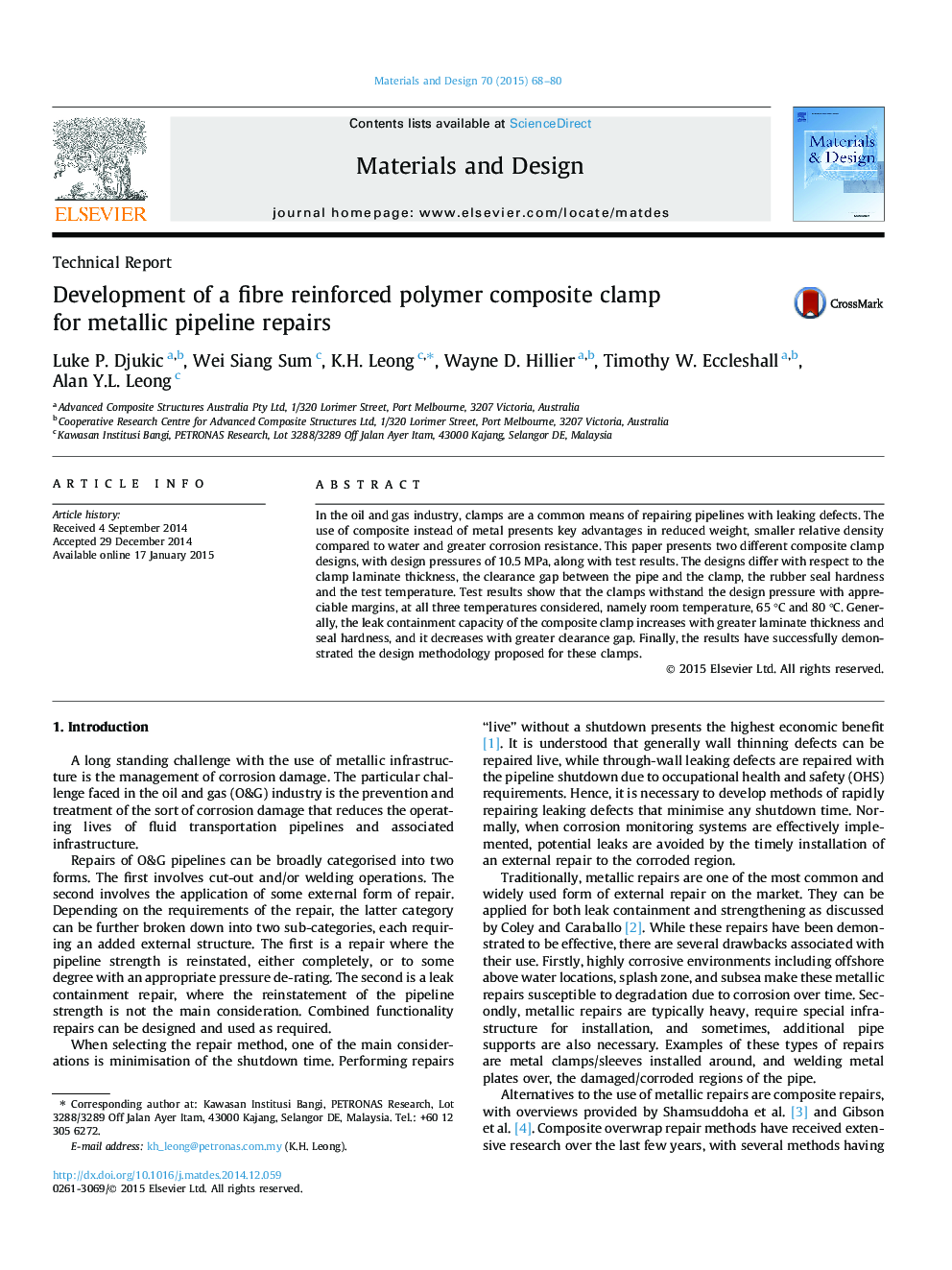| Article ID | Journal | Published Year | Pages | File Type |
|---|---|---|---|---|
| 828680 | Materials & Design (1980-2015) | 2015 | 13 Pages |
•New composite repair method developed for leaking and wall thinned high pressure oil pipelines.•Composite repair allows for significant weight savings and improved corrosion resistance.•Design of experiment finite element analysis methodology used to design repair clamps.•Repair method demonstrated effective for temperature range of 20 °C to 80 °C.
In the oil and gas industry, clamps are a common means of repairing pipelines with leaking defects. The use of composite instead of metal presents key advantages in reduced weight, smaller relative density compared to water and greater corrosion resistance. This paper presents two different composite clamp designs, with design pressures of 10.5 MPa, along with test results. The designs differ with respect to the clamp laminate thickness, the clearance gap between the pipe and the clamp, the rubber seal hardness and the test temperature. Test results show that the clamps withstand the design pressure with appreciable margins, at all three temperatures considered, namely room temperature, 65 °C and 80 °C. Generally, the leak containment capacity of the composite clamp increases with greater laminate thickness and seal hardness, and it decreases with greater clearance gap. Finally, the results have successfully demonstrated the design methodology proposed for these clamps.
